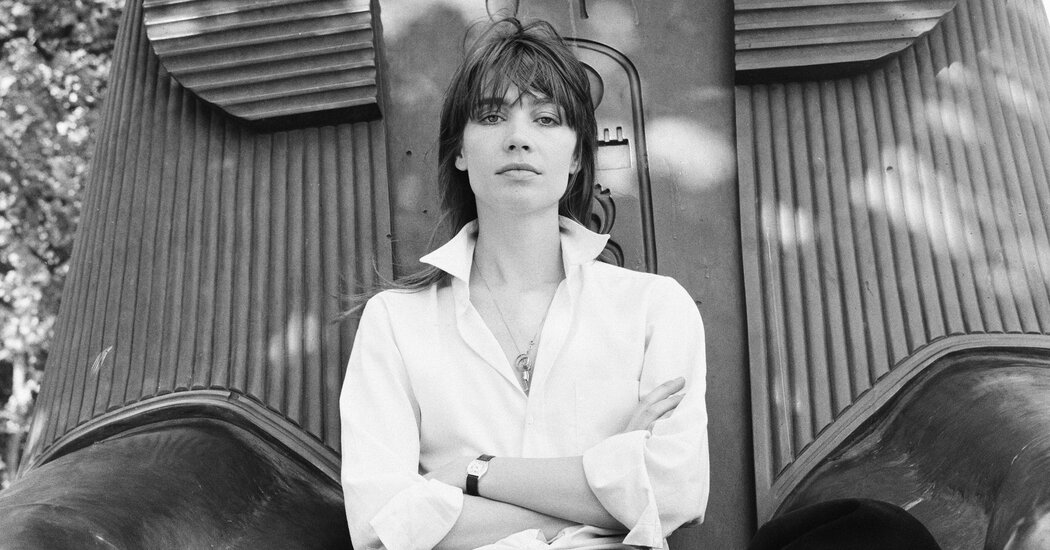By day, the French girl wears white jeans, leather loafers, wind-swept bangs and a bare face.
By night, she wears a 35-pound steel dress by Paco Rabanne, the metal plates gleaming against her tanned skin.
Today she is mythical: the subject of Vogue articles, Pinterest boards and TikTok compilations. But in the 1960s and 1970s, she was very real.
Françoise Hardy, who died of cancer on Tuesday, found fame first as a singer. She popularized the breezy French pop genre known as yé-yé. She acted, too. In 1966, when she starred in the John Frankenheimer film “Grand Prix” — a Formula 1 drama in which Ms. Hardy wore minidresses from her own closet alongside racing suits — The New York Times described her as an avatar for her generation: “young, cool, uncommunicative but unpretentious.”
Ms. Hardy was aware then, as she later wrote in her memoir, that journalists were more often captivated by her appearance than by her abilities. (The first words of that Times article noted her “long hair the color of lightly toasted chestnuts.”)
“The English-language press was much less interested in me as a singer than they were as an ambassadress of French style,” she wrote in “The Despair of Monkeys and Other Trifles,” published in the United States in 2018 by Feral House.
Her “rangy, androgynous build,” as she described her body in her book, suited the modern, space age aesthetic of the French couturier André Courrèges, whose angular pieces she wore onstage. She loved the way his geometric designs gave her an “extraterrestrial silhouette.”
But Ms. Hardy was also self-critical, writing in her memoir that she had an “inborn discomfort around looks and lenses,” and telling Life magazine in 1964, when she was 20, that “I can’t stand to wear anything that will make people look at me.”
Perhaps that explains her understated offstage wardrobe, which, by the mid-1970s, constituted jeans, unfussy tops and tailored jackets. She favored pants even when they drew the attention she had wanted to avoid. “People screamed and hollered,” the designer Yves Saint Laurent told Women’s Wear Daily in 2005, describing the scene when Ms. Hardy arrived to the Paris Opera wearing his famous Le Smoking tuxedo. “It was an outrage.”
It was this effortless rebellion that inspired the public’s obsession. Half a century later, Ms. Hardy has been cemented as the ur-French girl — naturally and nonchalantly chic — still a muse for fashion designers. A news release for the latest Tom Ford collection, shown in Milan in February, referred to runway models as “strong and confident, with the edge of Françoise Hardy.”
Ms. Hardy embraced her role as French style ambassador. But the title came with some tension. As a symbol, she became more of an ideal than a real human woman. Men were openly obsessed with her, including Mick Jagger, David Bowie and Bob Dylan.
Later in Ms. Hardy’s life, as she promoted her memoir, she would grow “exasperated” with the way male journalists reacted to her, according to Christina Ward of Feral House, who handled the American marketing and publicity for the book.
“All of them had a strange fanboy approach, like they had imagined being in love with Françoise as she was in 1963,” said Ms. Ward, who described Ms. Hardy as having a prickly exterior as a result of being objectified for decades. “She had to carry this burden of what other people thought of her.”
But it wasn’t hard to see why so many people were drawn to the ideal.
Erik Torstensson, co-founder and creative director of the contemporary denim brand Frame, cited “the air of insouciance in her style.”
“Her wardrobe defined the style classics of our generation,” Mr. Torstensson wrote by email on Wednesday. “The trench, the smoking tux, the Breton and flares, she even made a boiler suit and motorbike helmet look impossibly chic, for god’s sake.”







